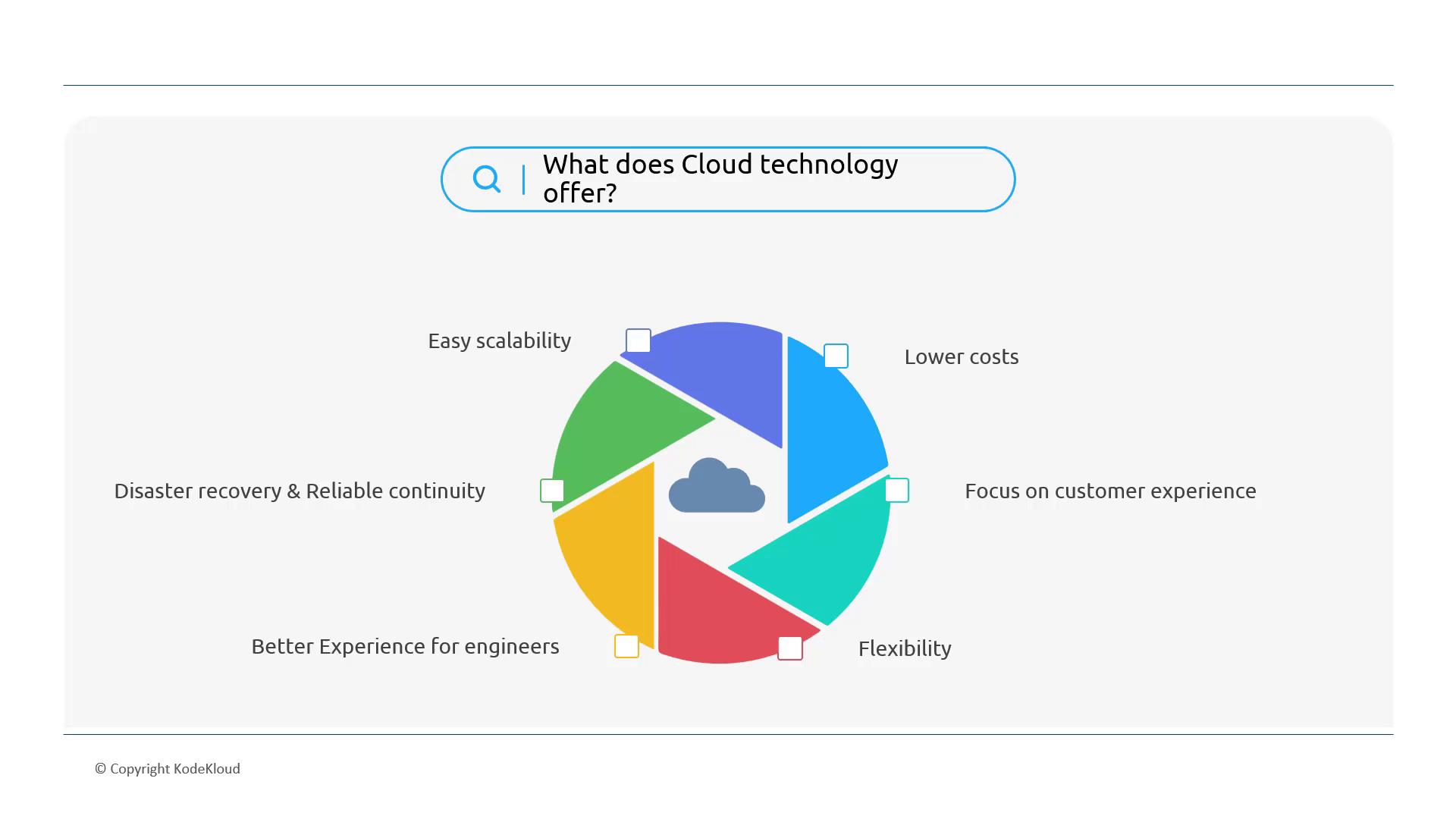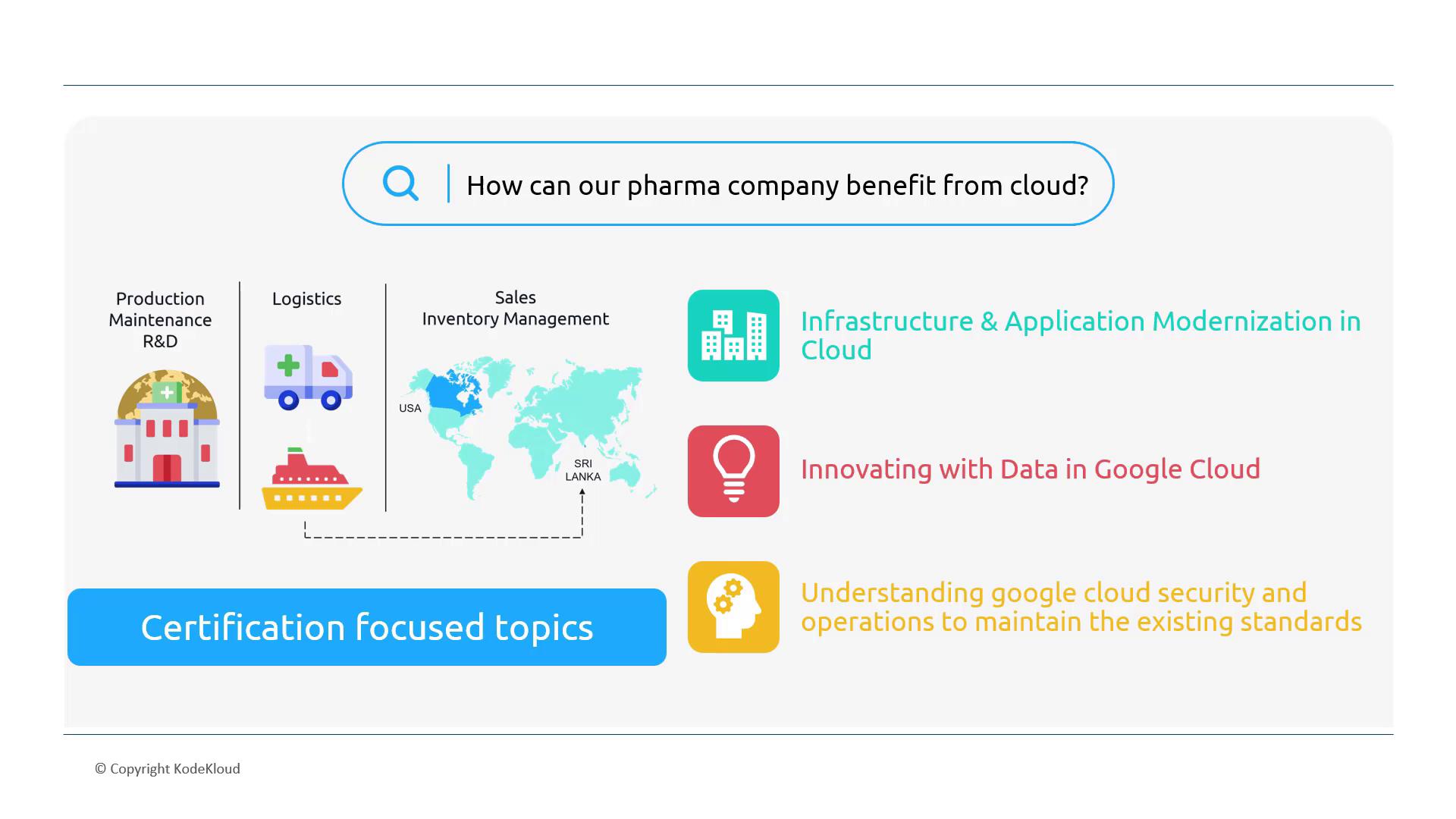GCP Cloud Digital Leader Certification
Introduction to Digital Transformation with Google Cloud
How cloud technology is revolutionizing business
Welcome to this lesson on the transformative impact of cloud technology. In today's discussion, we explore how cloud platforms, such as Google Cloud Platform (GCP), are enabling businesses to achieve digital transformation by driving innovation, reducing costs, and improving operational efficiency.
Cloud technology offers numerous advantages, including:
- Lower infrastructure and maintenance costs.
- A stronger focus on enhancing customer experience.
- Flexibility to experiment with minimal upfront investments.
- Improved collaboration among engineering teams.
- Robust disaster recovery solutions.
- On-demand scalability for adapting to fluctuating workloads.
For example, flexibility allows companies to launch diverse sales campaigns with minimal initial expenditures. Moreover, cloud services empower teams to work independently on various products, reducing delays commonly associated with siloed structures. This results in faster development cycles and quicker launches of new services.
One significant advantage of using GCP is its robust disaster recovery and reliability support. By transferring these responsibilities to GCP, organizations can leverage its robust infrastructure while still maintaining control over specific operational aspects. Scalability also plays a pivotal role; businesses can rapidly harness additional resources during high-demand periods—such as during major ad campaigns—and then scale back seamlessly when demand diminishes.

GCP Cloud streamlines infrastructure management by providing and maintaining the necessary resources. This allows organizations to concentrate on enhancing customer experience and fostering innovation. As customer satisfaction rises, so does business growth—similar to the success seen in many popular mobile apps today.

Key Insight
Migrating to cloud technology not only reduces operational burdens but also empowers businesses to innovate and scale faster in a competitive market.
Let's consider a practical use case involving a pharmaceutical company with three key departments driving its operations. Traditionally, such companies might rely on private data centers built in-house. However, moving to GCP can accelerate their digital transformation through a focused approach that includes:
- Migrating existing infrastructure and applications to the cloud.
- Leveraging GCP’s machine learning and AI tools to glean insights into customer trends and optimize internal processes.
- Maintaining security and operational standards within the cloud environment.
These initiatives align with industry best practices and underscore how cloud technology can benefit sectors like pharmaceuticals by modernizing infrastructure and driving data innovation.

That concludes this lesson on how cloud technology is revolutionizing business. Thank you for following along, and we look forward to sharing more insights in our next article.
Watch Video
Watch video content